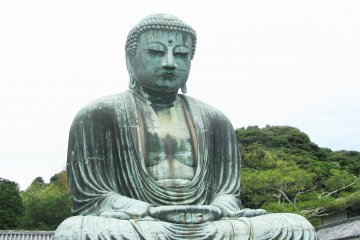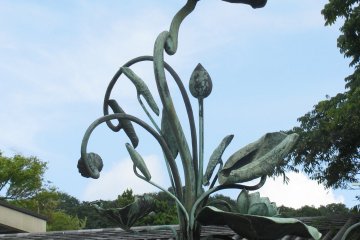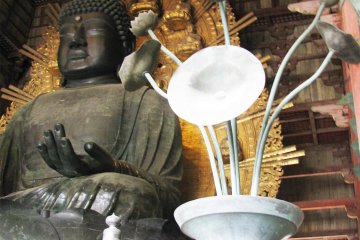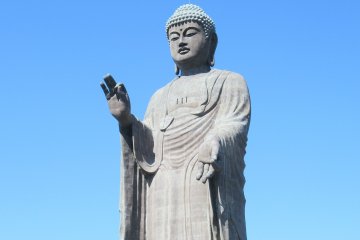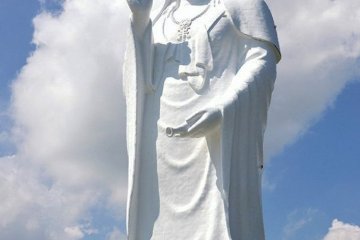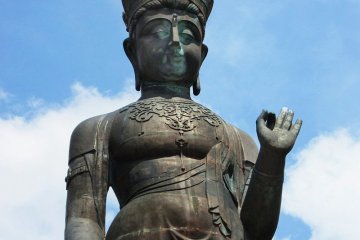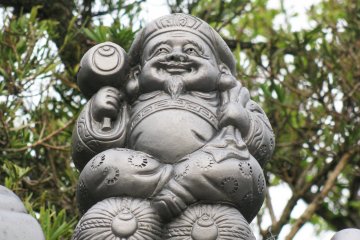Statues of Buddha, the goddess Kannon and other revered figures in the Buddhist religion are very common in Japan. Most, if not all of them, have either something in their hands or are holding their hands in a unique gesture. Naturally, I was interested to find out what this all meant.
Kamakura Daibutsu
The first Buddha statue I visited was the Kamakura Daibutsu. His hand posture, a mudra, is called 'dyakhna-mudra' - the mudra of concentration. The thumbs, connected and forming two circles of perfection, expresses 'firm faith' in the symbolic language of Buddhism.
Buddha means 'awakened' - one who has awakened from the sleep of ignorance and sees things as they really are. He knows everything about the past, present and future, and is completely free from all mental obstacles. The 'third eye' of the Buddha - a shining point or pearl in the middle of the forehead - symbolizes unity, balance, spiritual consciousness and enlightenment.
Next to the Daibutsu are bronze lotus statues. One of the legends about the lotus origin says that upon birth, the Buddha took seven steps on his own and where he stepped, the most beautiful lotus flowers with many pink petals bloomed.
The lotus is one of the oldest and most important sacred Buddhist symbols. Growing out of the 'dirt', the lotus flower remains pure - just like a Buddha born in the world - and represents purity, perfection, grace and striving towards the sun, to spiritual purity.

Ushiku Daibutsu
The world's tallest bronze statue is an image of the Amida Buddha, also called Ushiku Daibutsu. Since the BUddha is considered the heart of the lotus, the figure stands within a blooming lotus flower. Ushiku Daibutsu's gesture is the hand mudra called 'vitarka mudra' and refers to the transmission of the Buddha's teachings.

Todai-ji Buddha
The largest statue inside a temple is the Buddha of Todai-ji, in Nara. The Buddha, here, also sits in a lotus flower, and his 'abhaya mudra' is a gesture of blessing, protection, peace, as well as benevolence and the dispelling of fear. On both sides there are lotus flowers that have not yet blossomed, aspiring upward on long stems.

Sendai Dai-kannon
The statue of Sendai Daikannon in Sendai depicts the Buddhist goddess Kannon carrying the pearl of desires 'hoju' in her right hand and a small vessel with the water of wisdom in her left hand, all of which refers to the 'Kannon, fulfilling desires.'

Sekai-heiwa Kannon
The bronze statue of Sekaiheiwa Kannon in the small onsen hot-spring town of Yudanaka has its hands in a 'varada' and 'abhaya' mudra. In Hindu mythology , this gesture means that 'The giver receives forgiveness, and the forgiving receives a blessing.'

In addition to images of Buddha, Kannon and others, images and statues of Shichi-fuku-jin - The Seven Gods of Happiness, are common. One of the deities here, I found to be quite interesting.
Daikokuten is a good-natured portly man sitting on two bags of rice. He can be recognized by the hood on his head and the bag of treasures (wisdom and patience) slung over his left shoulder. In his right hand, Daikokuten holds a mallet, each stroke of which fulfills dreams.








